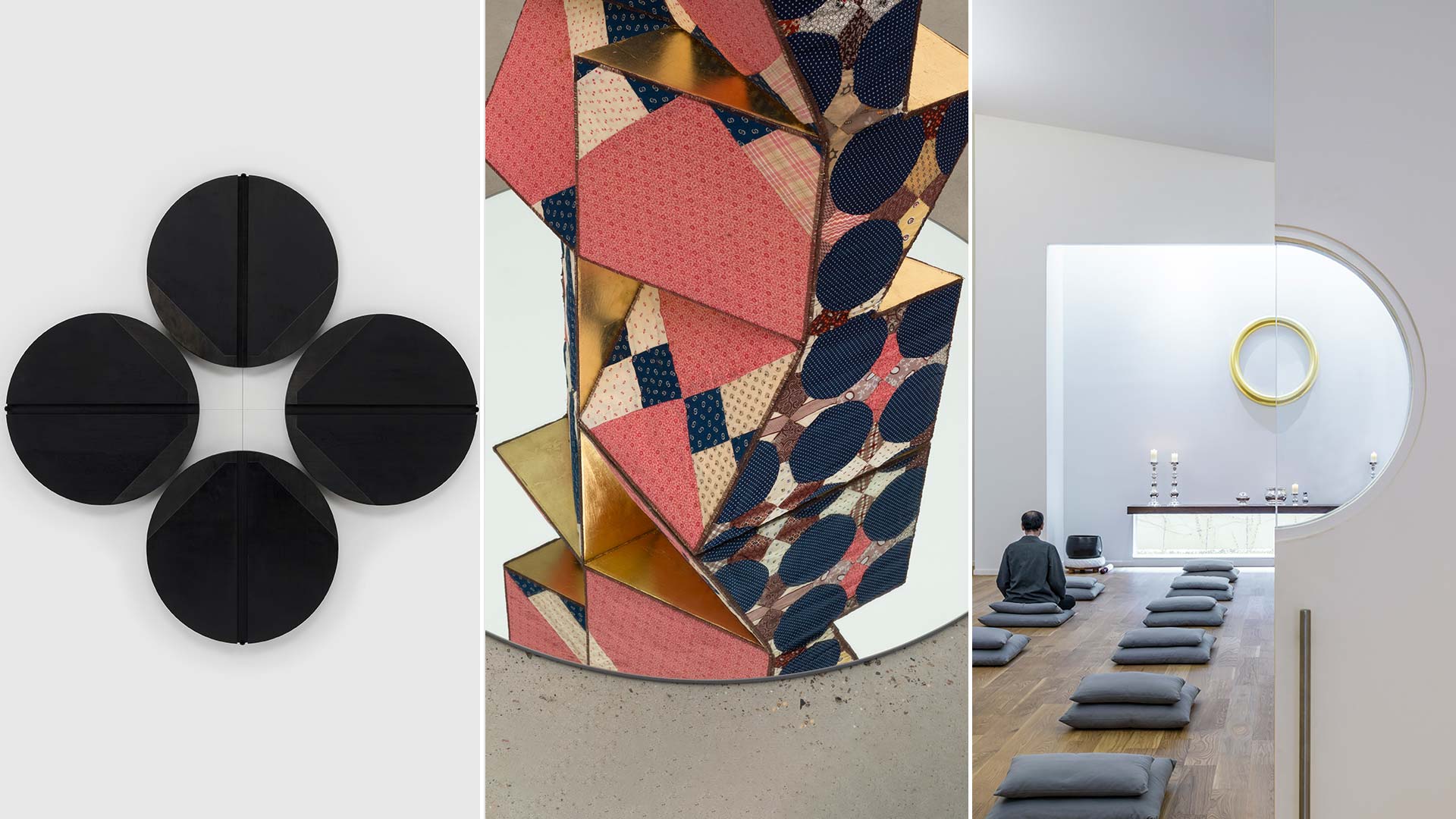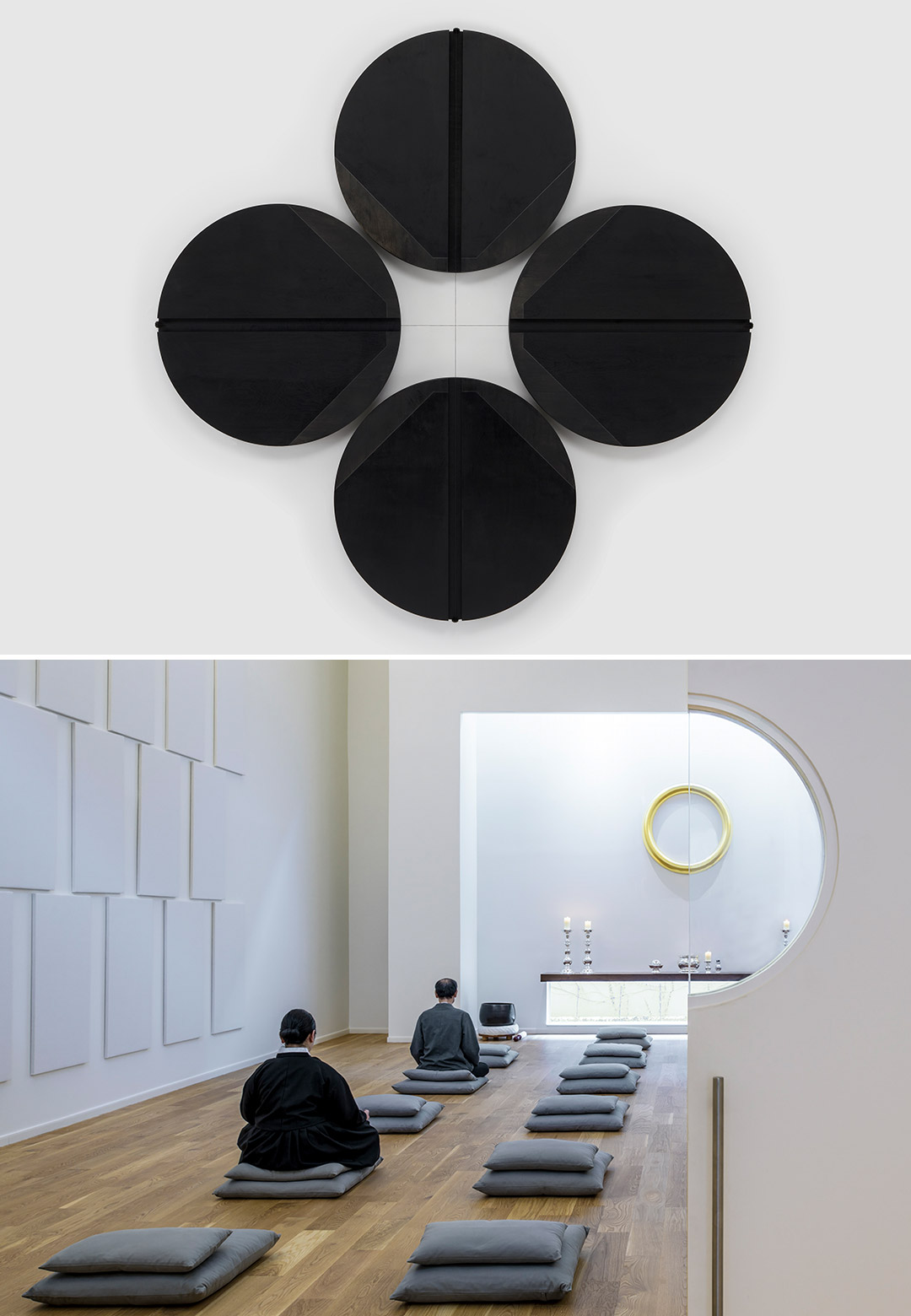Highlighting the role that our direct engagement plays in the creation and canonisation of works of art in contemporary cultural discourse, prompting exchanges that go beyond the artifice of time, The National Academy of Design presents the exhibition Sites of Impermanence as a showcase of art and architectural works by the recently elected 2023 National Academicians Alice Adams, Sanford Biggers, Willie Cole, Torkwase Dyson, Richard Gluckman, Carlos Jiménez, Mel Kendrick, and Sarah Oppenheimer. The design exhibition, taking place in the institution’s gallery space in New York will be on till May 10th, 2024.
How do art and architecture frame the contemporary moment? Attempting to understand the contemporary, Italian philosopher Giorgio Agamben writes, “To perceive, in the darkness of the present, this light that strives to reach us but cannot—this is what it means to be contemporary.” We are constantly moving through the moment of the immediate, with a foot in the present and one towards the future–in constant flux–a state of impermanence. The aesthetic sensibilities that govern contemporary art and architecture today will soon be part of our cultural memory, or recede into obscurity. Still, they remain markers of the values that carry over given enough time. As Finnish architect Juhani Pallasma writes in Eyes of the Skin, “Architecture is our primary instrument in relating us with space and time and giving these dimensions a human measure. It domesticates limitless space and endless time to be tolerated, inhabited and understood by humankind.” Our engagement with artworks created in the immediate moment further impacts the nature of such work—a dialectic process of the creation of culture.
On the showcase, chief curator Sara Reisman writes, “The displayed works push against binary thinking, and the dominance of dichotomies, by blurring boundaries drawn between nature and human, human and machine, spirit and object, systems and their constituent parts. [They] defy classification and prompt a critical assessment of the origins of both official, so-called "high culture" and the infinite cultural identities that converge to define the United States' aesthetic landscape in the twenty-first century.”
Each sculpture, drawing, installation and artwork in the showcase reflects the mutability of art public spaces, from the art gallery to the built environment, prompting reflections on the precariousness of human experience. Each prompts a dialogue about particular conditions that have led to this contemporary moment wrought by tensions not only exacerbated by the climate crisis, but also lingering effects of colonialism, and political and economic factors. Here, as the exhibition hopes to show, ‘the effect of art and architecture cannot be underestimated.’ To this end, the artists and architects featured in Sites of Impermanence respond to our modern condition and the histories that have shaped it.
Sculptural works by contemporary artist Torkwase Dyson, American sculptor Willie Cole, and visual artist Sanford Biggers featured in the exhibition suggest new forms of cultural artefact that draw on often neglected histories. Dyson’s work is an abstract representation of migration stories and the liberation of Black and Brown people. They are the result of “drawings made in response to the spatial strategies of enslaved people who hid or were stowed away in architectural spaces to attain their freedom,” as she mentions in a podcast. On the other hand, Cole and Biggers use everyday materials laden with meaning, repurposing them to create something new. While Dyson’s reaction to Black history creates timeless symbols, the other two use the materiality of the every day to confront inequality and explore new ways of thinking about the past today.
The works by the three artists not only shed light on the past in a new language but help disentangle narratives of humans and landscapes. In a similar vein, American visual artist Mel Kendrick’s work is a direct allusion to connections between human and other natural forms. Kendrick's works by blurring the boundaries between human and the natural invites critical observations on how nature shapes our perception of place, evolving.
Architecture can similarly be said to mediate perceptions of nature and place, and often architects have emphasised assimilating the natural with the built. Here, Carlos Jimenez and Richard Gluckman showcase models of architectural projects (Jimenez showcasing his design process for Won Buddhism, a temple in Texas, and Gluckman maquettes and drawings for the De Maria Pavilion) that sensitively consider their natural context. As Reisman notes of their work, “Gluckman and Jimenez were keen to present these architectural projects devoted to art and spirituality is timely, given an era marked by social and political instability. Their works demonstrate the function and power of the systems of belief inherent to contemporary artistic expression.”
Discursively, the exhibition attempts also to question the site–the site of the gallery, a physical location or site as a discursive locus–wherein the art is placed. What place do these architectural models have in a gallery and what can they relay to a visitor? What role do abstract, repurposed sculptures have in reconstructing the past, and how does it affect the present? Sarah Oppenheimer’s installation offers some response. The New York-based artist’s practice often questions our assumptions about space, time, and light within the architecture of art museums. Oppenheimer's site-specific interactive installation N-02 takes the customary framework of such a space and intervenes with a pulley system that gallery visitors can interact with, pointing to our agency in enacting change.
Finally, the other sculptural designs that interact with the physical space of the gallery are by Alice Adams. Adams incorporates materials like mesh, wood, concrete, and rope, among others, into her installations, of which Siding A (2014) and Siding B (2015), and White Coat (2021) are on display. Best known for her textile-based, site-specific, and sculptural practice, her work serves as a useful test case for understanding the function of a site in both physical and conceptual terms. It reveals internal and external compositions, by alluding to the mesh and webbing present in the construction of cities, highlighting the skin of architecture, and asking the visitor to situate themselves, on the outside or the inside of a space.
As a showcase, Sites of Impermanence asks us to consider our impact within public spaces, with the most effective installations blurring the boundaries between humans, objects, and architecture. Pallasma goes on to write in his seminal text that “the world is reflected in the body, and the body is projected onto the world. We remember through our bodies as much as through our nervous system and brain. The senses do not only mediate information for the judgment of the intellect; they are also a means of igniting the imagination and articulating sensory thought. Through the works that question not only collective response to the contemporary but also blur the idea of sites of action and reflection, the works are a call to collectively reimagine how we engage and to see ourselves as more active agents of the everyday.






 Sign in with email
Sign in with email










What do you think?